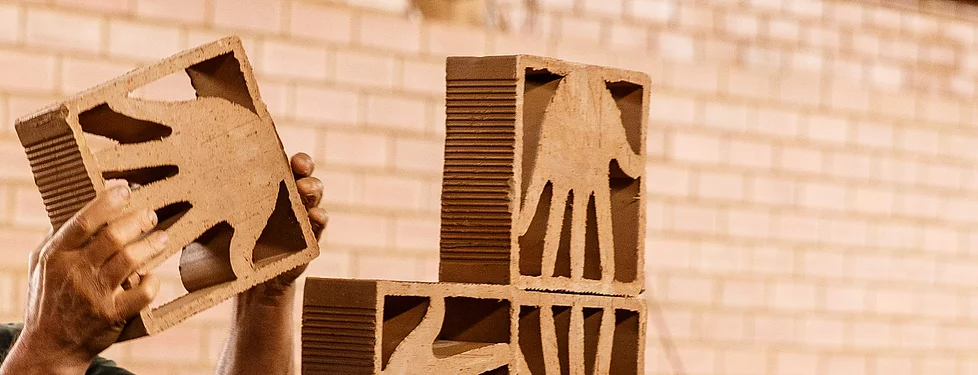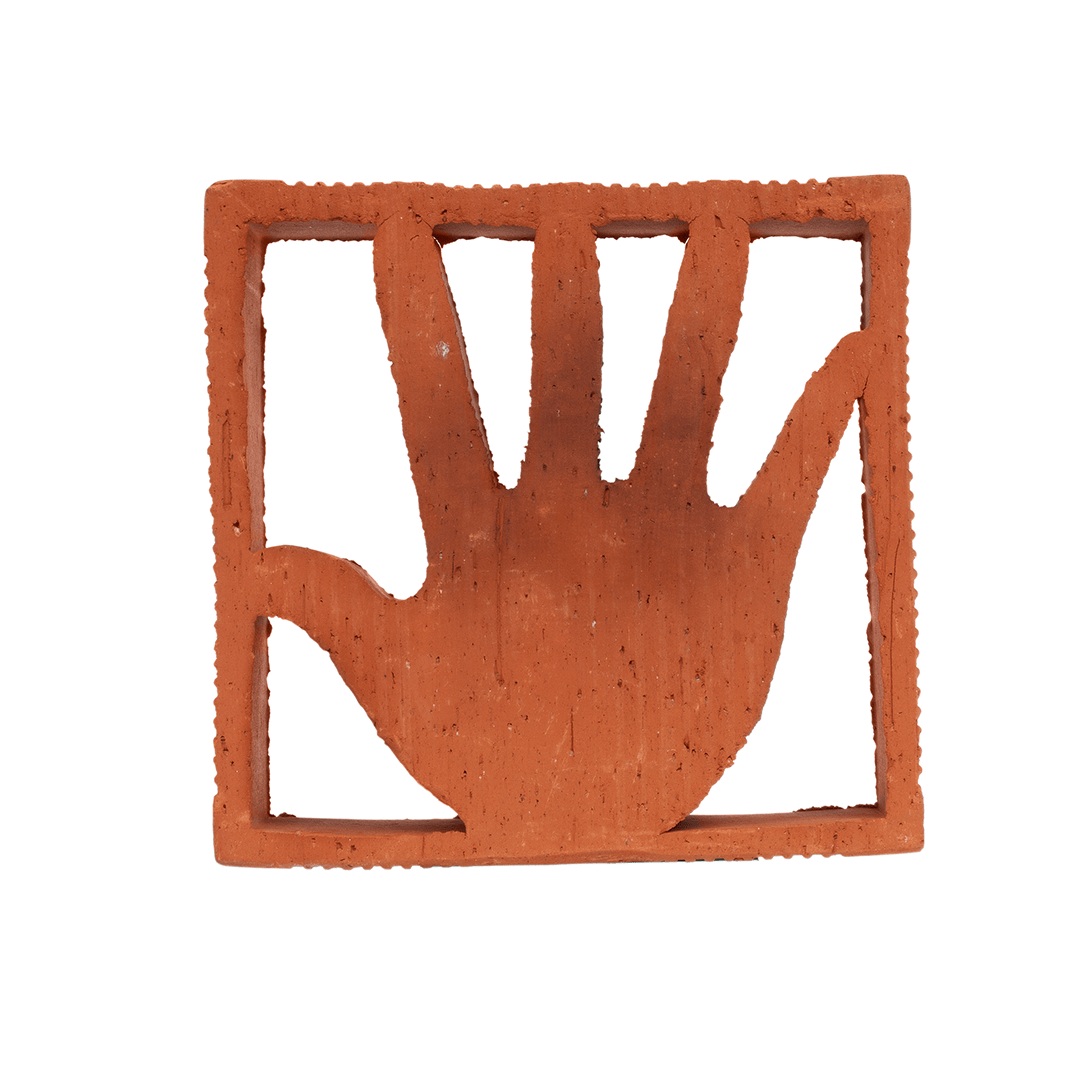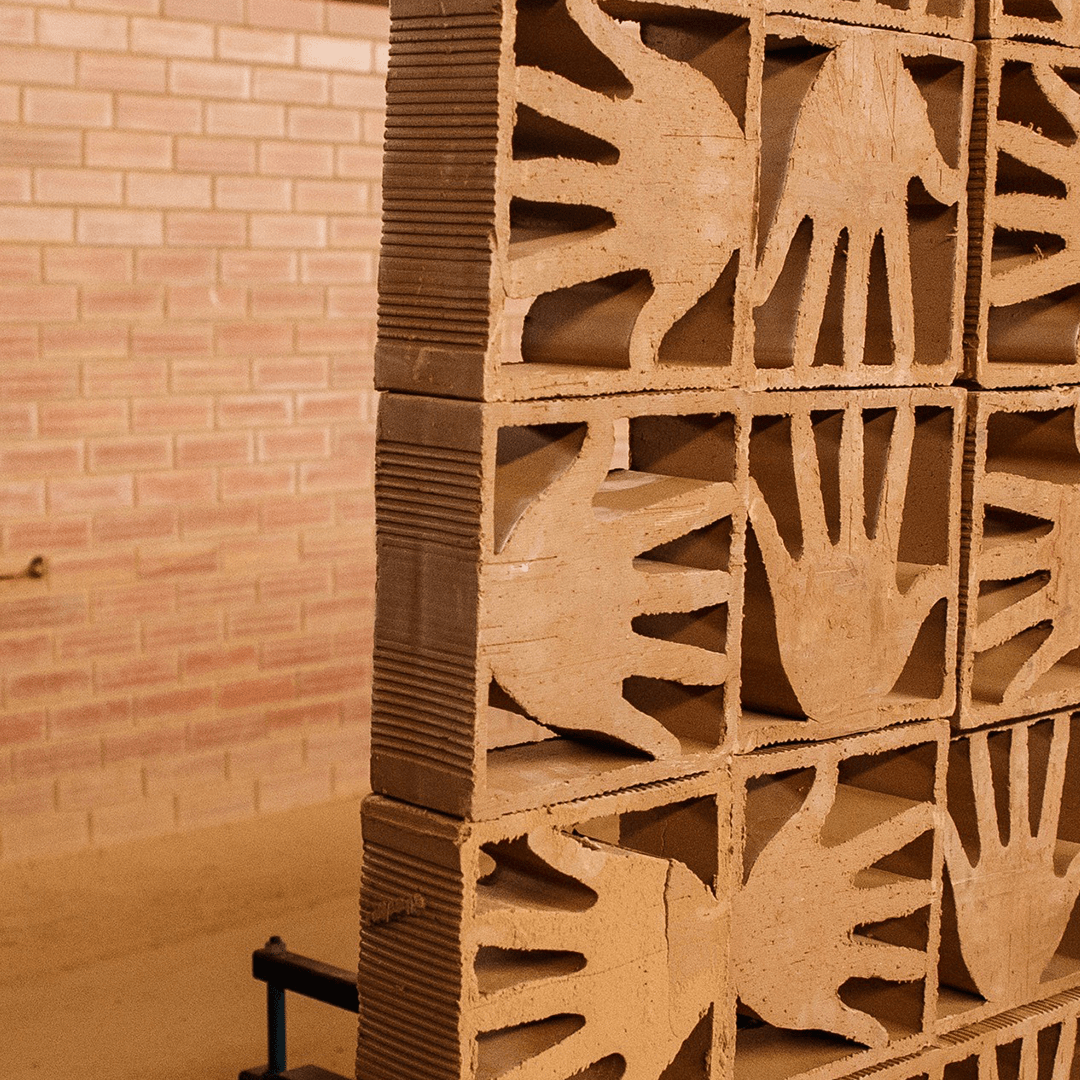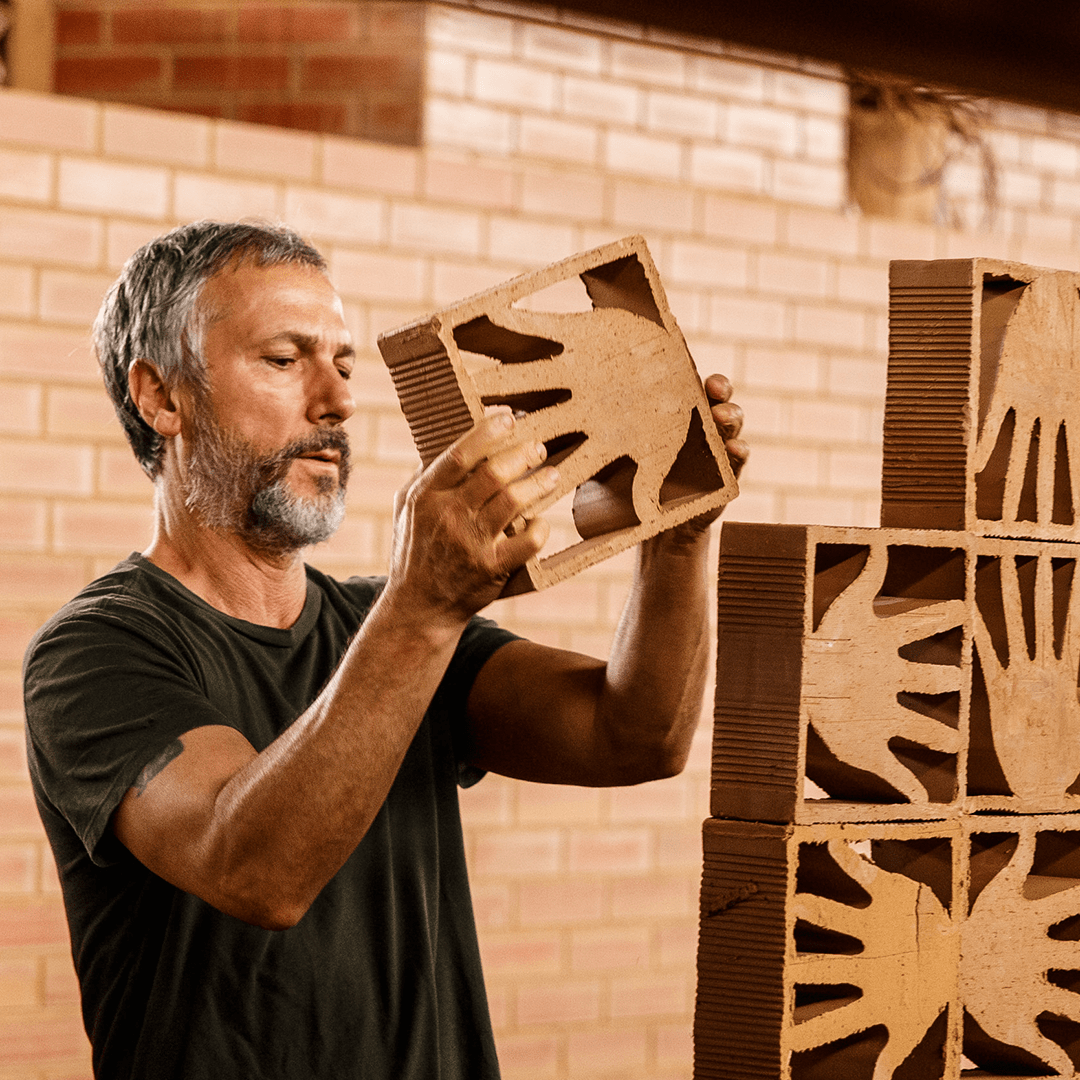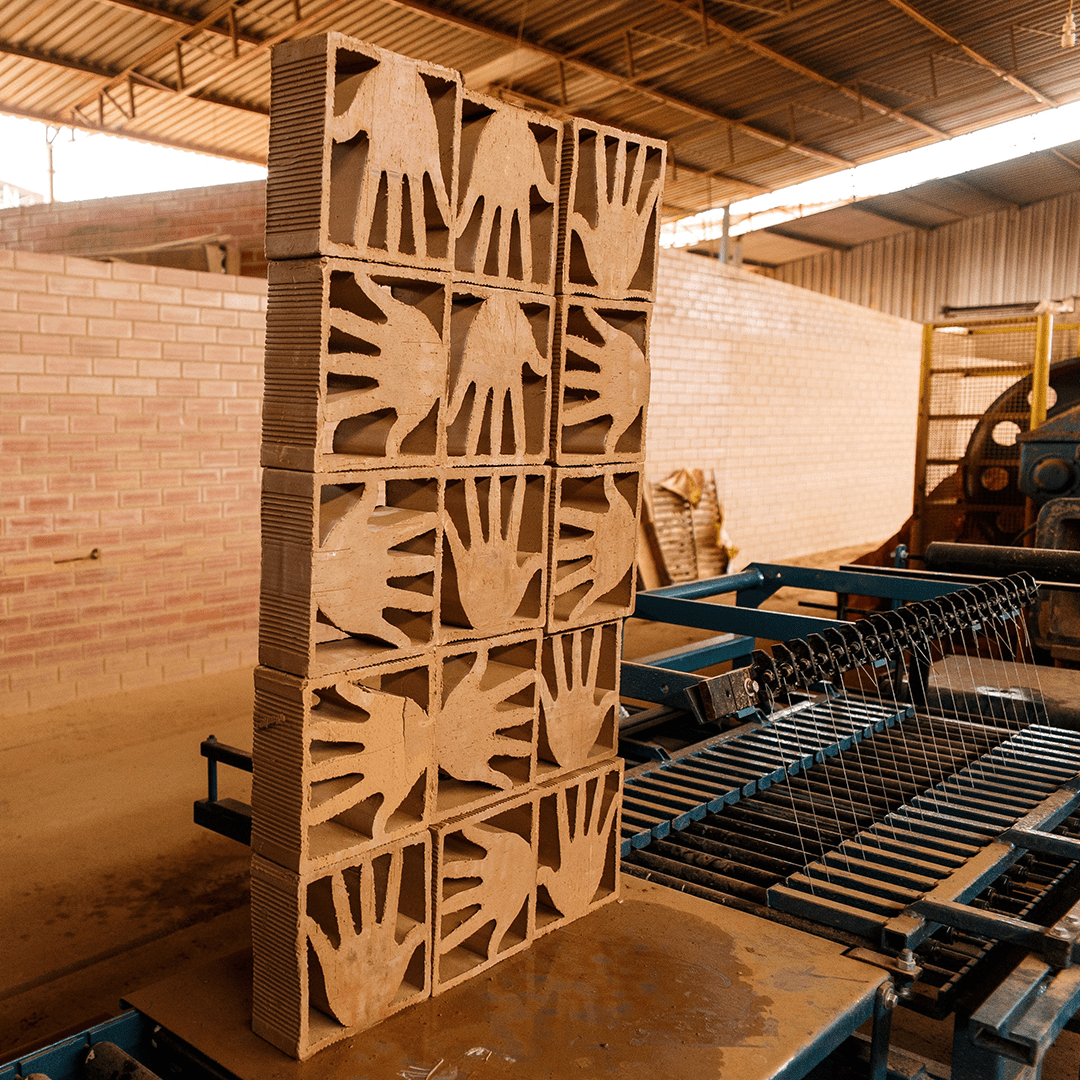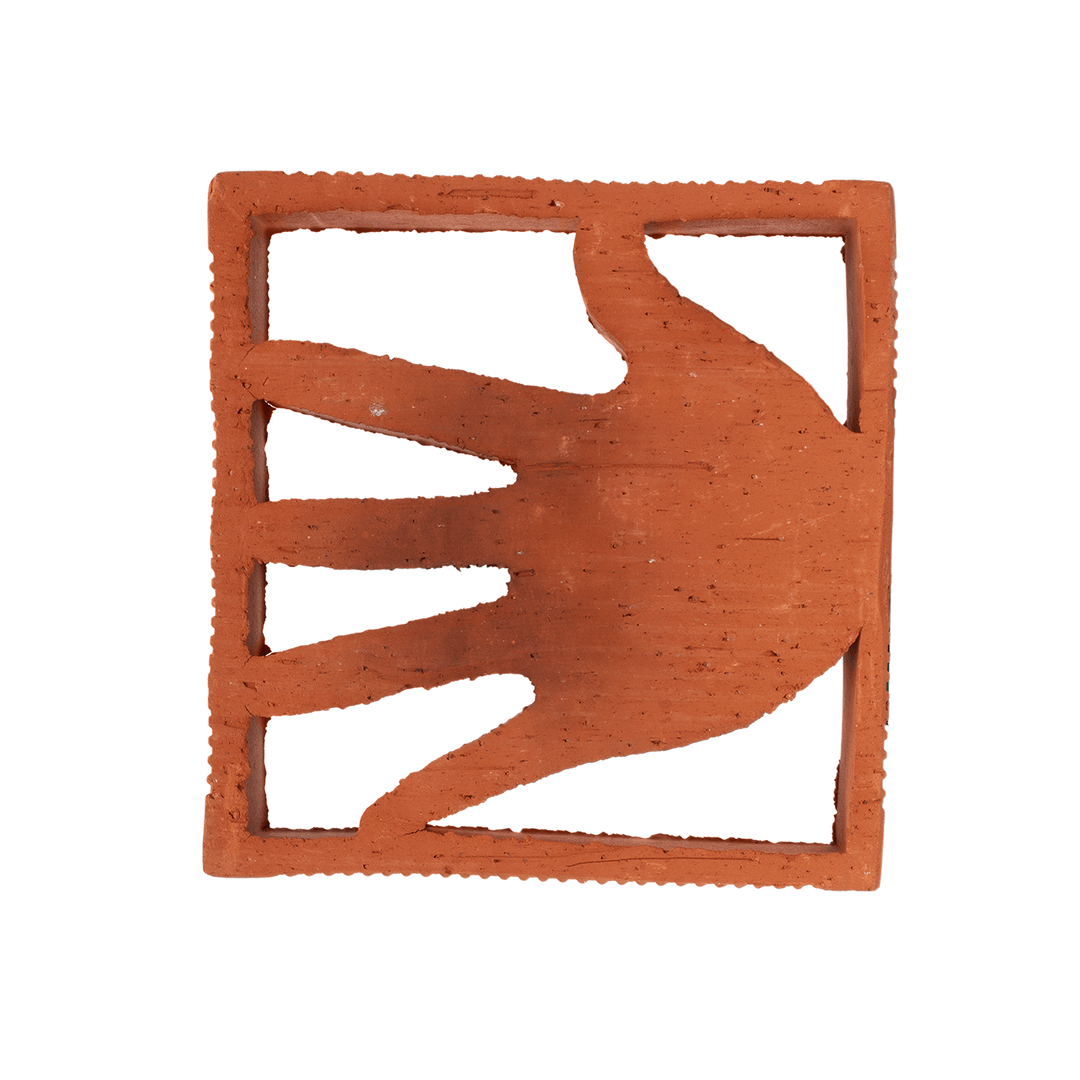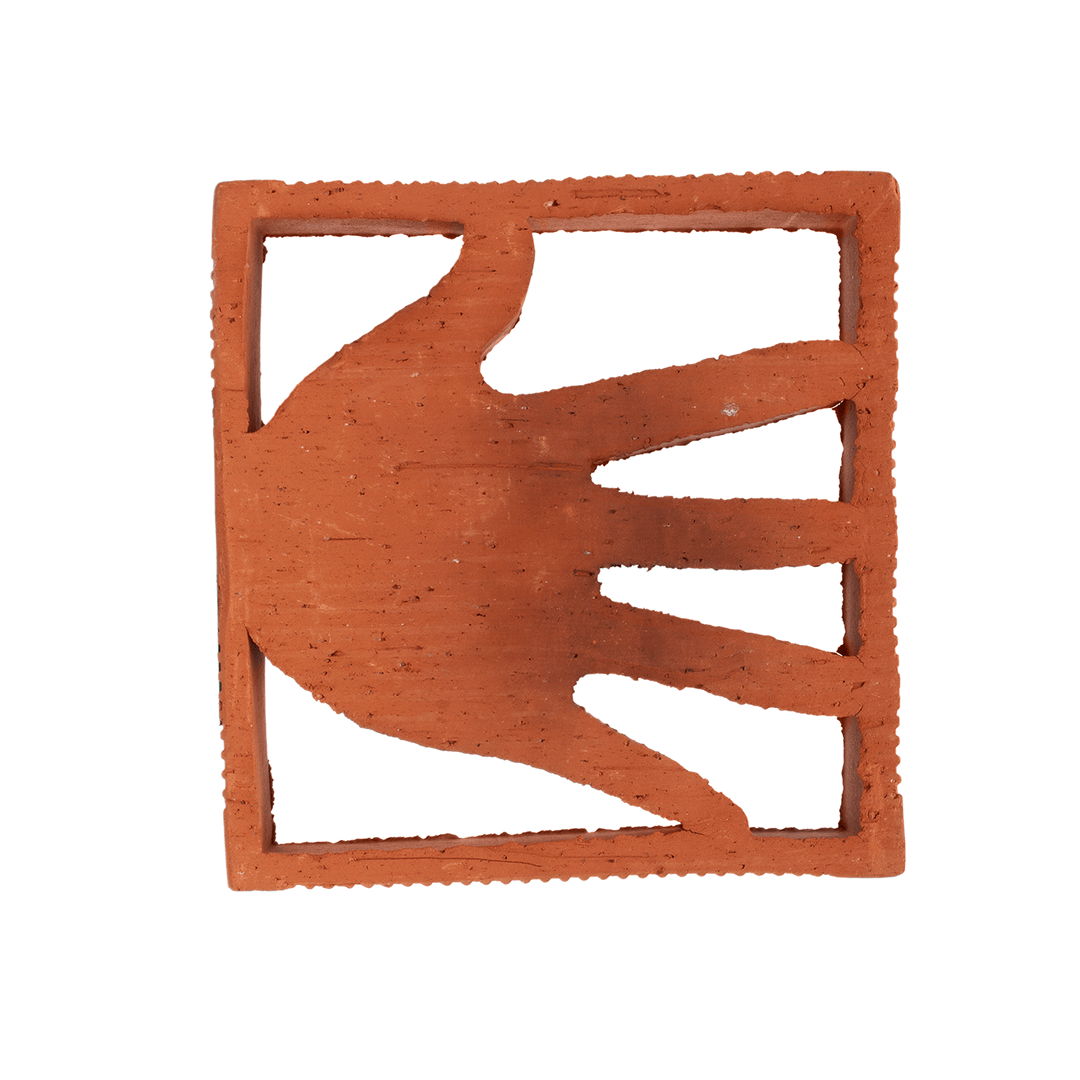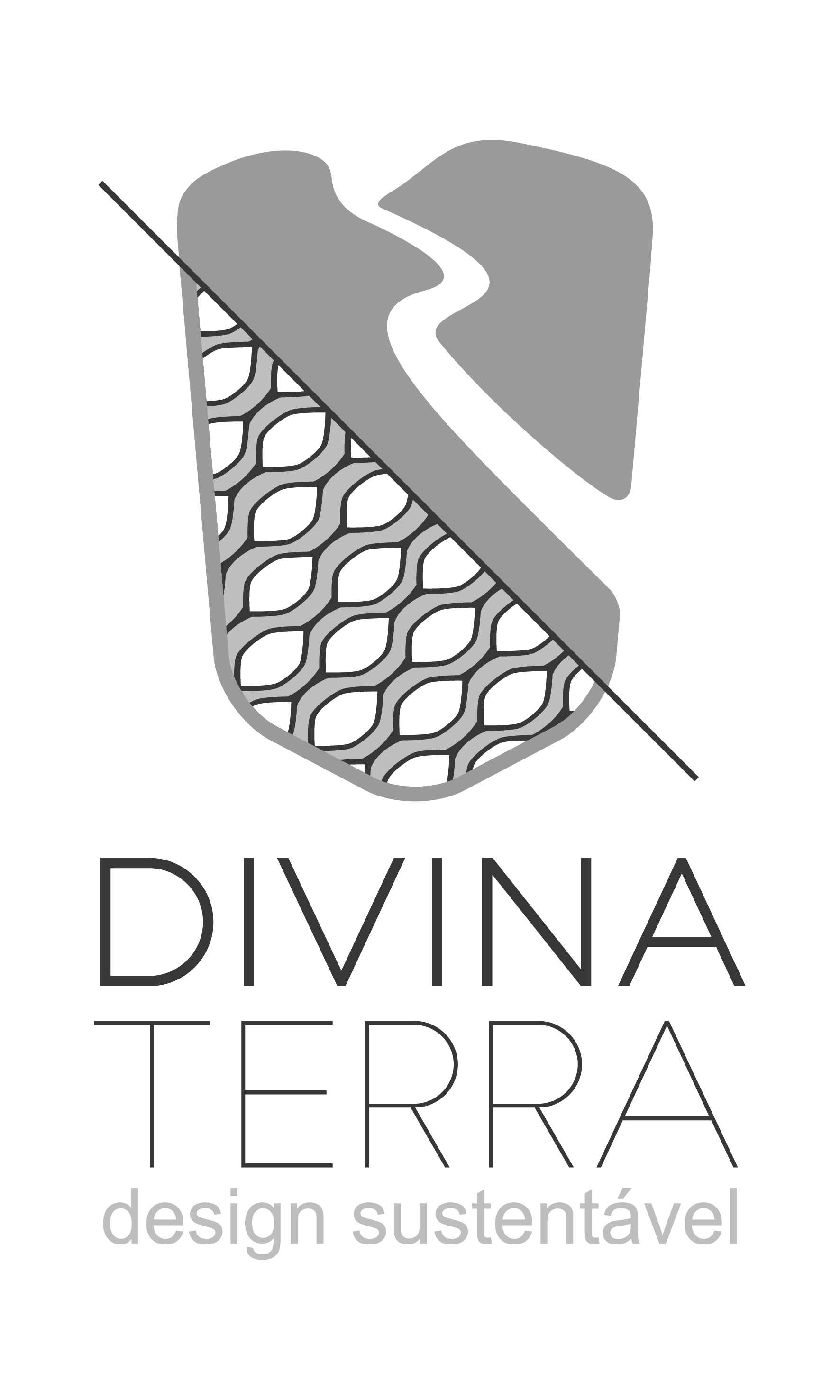INSTITUTO CAMPANA AND DIVINA TERRA
Fernando and Humberto Campana, through the Instituto Campana, started a partnership with Divina Terra after their visit to the coating company in Turmalina, in 2016.
Impressed by the recent environmental disaster in Minas Gerais, the designers decided to create a brick for this Project, the cobogó, whose internal design represents the shape of a hand, as a symbol of the tragedies caused in the state.
Entitled “Mão” (Hand), the cobogó is the result of natural materials alchemy, which uses three different types of clay, conveying more resistance to the piece. The intention was to integrate the mud from Mariana to the mix, but unfortunately it was impossible because it interferes with the quality of the product due to the high mineral content, which made it brittle. Each brick is 20cm-high, 20cm-long and 7cm-wide.
In the last years the Campana brothers explored the cobogó in their furniture and later, in architecture projects. It is a totally Brazilian element, created by three engineers, (Amadeu Coimbra, Ernest Boeckmann and Antônio de Góis) who named the piece after their surnames initials. Cobogó bricks may be used in different scales and contexts, highlighting mainly light diffusion and air circulation.
Part of the sales revenue is forwarded to the social activities conducted by the Instituto Campana.
About the Instituto Campana
Founded in 2009 by Fernando and Humberto Campana, the mission of the Instituto is to preserve the legacy of the Campana Brothers, using design as a transformation tool through social and educational programs. The private non-profit civil association achieves this objective through partnerships with national and foreign institutions, companies, organizations and public and private entities. The actions of the Institute are organized in three main work areas: first, the revival of artisan techniques that encompass traditional dying out artisan skills as well as the artistic concepts and techniques developed by the Campana brothers; second the development of social inclusion and education as a means to improve peoples lives through the creation of art and design educational programs as well as lectures and exhibits from the Institute collection and others; third, to maintain and preserve the collection and memory of the brothers to share their knowledge in design, architecture and arts with future generations.
About Divina Terra
Founded in 2013, in Turmalina, Minas Gerais, Divina Terra aims at the sustainable and handcrafted production of ceramic and wooden pieces. Design and sustainability are aligned to the use of raw material and waste from the Grupo Emilia Cordeiro companies, to which it belongs, to create new products. Rooted in the Vale do Jequinhonha, Divina Terra bases its work in the ability of local man to transform mud and wood into craft. It is a modern exponent of local culture that praises its land and creativity and transforms raw materials in exclusive, unique coatings, with sophisticated handicraft design. www.divinaterra.com.br
